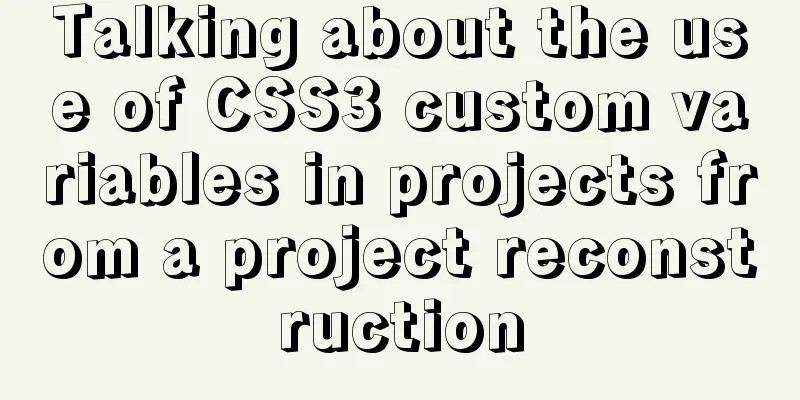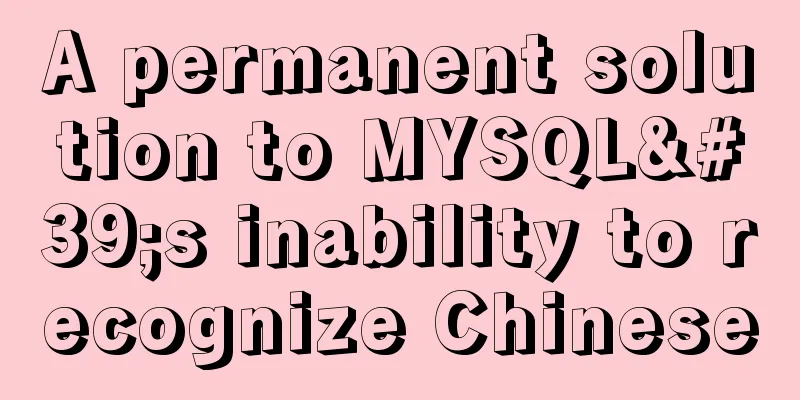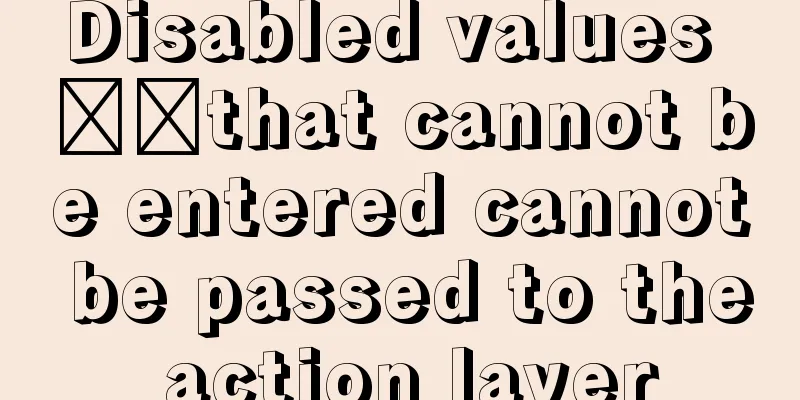Talking about the use of CSS3 custom variables in projects from a project reconstruction

|
About CSS3 variables When declaring a variable, add two hyphens (
body{
--color:red;
} In the above code, a custom variable is declared in the body selector: It is no different from formal attributes such as color, except that it has no default meaning. So CSS variables are also called "CSS custom properties" - because variables and custom CSS properties are actually the same thing. Of course, there are a lot of similar introductions on the Internet, so let’s leave that aside for now and get to the point!
Cause - Refactoring of "tabs" I remember that in a project I did for a community website, there was a "tab" component for promotion:
<div class="main-left-bottoms">
<div id="tabs">
<ul>
<li class="on"><a name="anchor">Club activities</a></li>
<li>Community Direction</li>
<li>Message from the President</li>
<li>Talent strategy</li>
</ul>
<div>
<p>Since its establishment, YouC Club has held a large number of activities to enrich the extracurricular life of club members and achieve the goal of combining work and rest. Facts have proved that this is indeed effective. <br>
For example,
<ol>
<li>On Mother's Day, we held <a href="http://www.50004.com/play52/fabebbfffcfa/XMzYwMzUwNjM4MA==/">
"Filial Piety·Mother's Day" event</a> (video loading may be a little slow) and achieved great success;</li>
<li>During the winter solstice, we held a <a href="http://sfxy.nyist.edu.cn/info/1068/3802.htm">"Winter Solstice Dumpling Making" activity with the school and the dormitories. Everyone had a lot of fun.</li>
<li>In our spare time, we also actively participated in the <a href="https://max.book118.com/html/2018/0513/166191393.shtm">"Visiting the Nursing Home" activity organized by the hospital, and had a great experience;</li>
</ol>
</div>
<div class="hide">
<p> YouC Studio was founded in 2009 and has a history of <span id="fffffyear"></span> years. <br> After these years of development, the community has produced talents in various fields, including PHP, Java, JavaWeb,
Big data and so on. . . <font color="red">The current mainstream learning direction of this club is JavaWeb, that is, back-end implementation, which is more inclined towards website development. </font> <br> The community often completes the development of a project through corresponding exchange activities.
In order to enhance their knowledge, members will occasionally participate in competitions and have achieved good results. <br><br>
<font color="#ff7f50"> For specific personal plans, please scan the QR code on the right to ask seniors! </font></p>
</div>
<script>
document.getElementById('fffffyear').innerHTML = (new Date().getFullYear() - 2009) + '';
</script>
<div class="hide">
<br><br>
<p>Although people are constantly joining and leaving, YouC is still here, waiting for you, and I firmly believe that the future of YouC will be even brighter! </p> <p>——President’s wish</p>
</div>
<div class="hide">
<br>
<p>Join us, join YouC. Here, you can have a wonderful knowledge experience. Seniors with great imaginations will lead you to explore knowledge, learn skills, carry out practical projects, and prepare for interviews. </font><br>
Here, you can find happiness beyond your imagination! ! ! </p>
</div>
</div>
</div>
.main-left-bottoms{width: 100%;min-height: 280px;margin-top: 10px;}
.main-left-bottoms h1{color: orangered;font-style: italic;}
.main-left-bottoms #tabs{width: 99%;padding:5px;min-height: 280px;}
.main-left-bottoms #tabs ul{list-style:none;display:block;min-height:30px;line-height:30px;border-bottom:2px red solid;}
.main-left-bottoms #tabs ul li{cursor:pointer;float:left;list-style:none;height:28px;line-height:28px;margin:0 3px;border:2px groove orangered;border-bottom:none;display:inline-block;width:65px;text-align:center;font-weight: bold;color: black;padding: 0 10px;}
.main-left-bottoms #tabs ul li.on{border-bottom:2px solid skyblue;}
.main-left-bottoms #tabs div{min-height: 199px;line-height:25px;border-top:none;padding:0.3125em;overflow:hidden;}
#tabs div p{font-size: 0.838rem;}
#tabs div ol li{font-size: 0.875rem;margin-top: 5px;}
#tabs div ol li a{color: lightcoral;text-decoration: none;}
#tabs div ol li a:hover{color: orange;}
.main-left-bottoms .hide{display:none;}Then use JS to add the class name hide to the (same level) elements outside the div click element. It's very simple. Later, as I learned more and paid more and more attention to "user experience", I thought: What if the browser could "remember" where the user browsed before exiting, whether it was a page, tab or list? That would be great. (I will publish a special article to discuss this later, it would be a bit too much to mention it here...) Later, CSS3 introduced the "custom variable" attribute. It happened that the official website page was reconstructed with Vue, so I thought about using CSS3 variables to redo this part: CSS3 variables to achieve tab switching
The seemingly smooth tab switching effect above is actually very simple (completed using vue+scss):
<div class="tab-navbar">
<nav>
<a v-for="(v, i) in list" :key="v" :class="{ active: index === i }" @click="select(i)">Title{{i + 1}}</a>
</nav>
<div>
<ul ref="tabs" :style="`--tab-count: ${list.length}`">
<li v-for="(v, i) in list" :key="v" :style="`--bg-color: ${v}`">I am the content {{i + 1}}</li>
</ul>
</div>
</div>
.tab-navbar {
display: flex;
overflow: hidden;
border-radius: 10px;
width: 300px;
height: 200px;
nav {
display: flex;
height: 40px;
background-color: #f0f0f0;
line-height: 40px;
text-align: center;
a {
flex: 1;
cursor: pointer;
transition: all 300ms;
&.active {
background-color: #3c9;
color: #fff;
}
}
}
div {
flex: 1;
ul {
--tab-index: 0;
--tab-width: calc(var(--tab-count) * 100%);
--tab-move: calc(var(--tab-index) / var(--tab-count) * -100%);
display: flex;
flex-wrap: nowrap;
width: var(--tab-width);
height: 100%;
transform: translate3d(var(--tab-move), 0, 0);
transition: all 300ms;
}
li {
display: flex;
justify-content: center;
align-items: center;
flex: 1;
background-color: var(--bg-color);
font-weight: bold;
font-size: 20px;
color: #fff;
}
}
} Define
export default {
data() {
return {
index: 0,
list: ["#09f", "#f90", "#66f", "#f66"]
};
},
methods: {
select(i) {
this.index = i;
this.$refs.tabs.style.setProperty("--tab-index", i);
}
}
}; In addition, defining I think the above case is definitely not enough to satisfy you, so: CSS3 custom variables to achieve 'alternative' loading bar
<ul class="strip-loading"> <li style="--line-index: 0"></li> <li style="--line-index: 1"></li> <li style="--line-index: 2"></li> <li style="--line-index: 3"></li> <li style="--line-index: 4"></li> <li style="--line-index: 5"></li> </ul>
.strip-loading {
display: flex;
justify-content: center;
align-items: center;
width: 200px;
height: 200px;
li {
--time: calc(var(--line-index) * 200ms);
border-radius: 3px;
width: 6px;
height: 30px;
background-color: #f66;
animation: beat 1.5s ease-in-out var(--time) infinite;
& + li {
margin-left: 5px;
}
}
}
@keyframes beat {
0%,
100% {
transform: scaleY(1);
}
50% {
transform: scaleY(.5);
}
} The Cool mouse tracking effects Coincidentally, before I wrote this article, a senior from the backend of a community suggested making a cool button to replace the original submit button:
The effect after the change is probably like this:
In fact, the idea is relatively simple. First, lay out and color the buttons, then use pseudo-elements to mark the position of the mouse, define <button class="track-btn"> <span>Young man, click me and I will give you strength</span> </button>
.track-btn {
margin: 0;
padding: 0;
/*Custom border*/
border: 0;
/*Eliminate the default blue border effect when clicking*/
outline: none;
-webkit-appearence: none;
overflow: hidden;
position: relative;
border-radius: 25px;
height: 49.9px;
background-color: #66f;
cursor: pointer;
line-height: 50px;
text-align: center;
font-weight: bold;
font-size: 18px;
color: #fff;
padding: 0 20px;
span {
position: relative;
pointer-events: none;
}
&::before {
--size: 0;
position: absolute;
left: var(--x);
top: var(--y);
width: var(--size);
height: var(--size);
background-image: radial-gradient(circle closest-side, #09f, transparent);
content: "";
transform: translate3d(-50%, -50%, 0);
transition: width 200ms ease, height 200ms ease;
}
&:hover::before {
--size: 200px;
}
}
const btn = document.getElementsByClassName("track-btn")[0];
btn.addEventListener("mousemove", e => {
btn.style.setProperty("--x", `${e.offsetX}px`);
btn.style.setProperty("--y", `${e.offsetY}px`);
});You can also add even more awesome animations on top of this! Reality & Prospects As mentioned before: you can put CSS3 variables anywhere - in fact, even the "less well-known"
//Reference/modify the css3 variable value in style document.documentElement.style.setProperty("name", value)It is worth noting that if you want to modify custom variables in CSS, it is currently recommended to put them in the same "target"! for example:
#angular {
--angular: "";
}
#angular:checked {
--angular: "angular";
} Most websites today define default spacing between items in a layout, as well as default padding, font sizes, and even typography layouts for all the different sections on the page based on page responsiveness. But many times, we can only switch between different "external link CSS files" or change all corresponding property values in a small range. But this will lead to one thing: before reaching the "next media critical value", there will always be some "accidental" distances, such as: within a certain range of
:root {
--size: 1.5em;
}
@media (min-width: 30em) {
:root {
--size: 2em;
}
}
.Container {
margin: 0 auto;
max-width: 60em;
font-size: var(--size);
} We can also listen to the resize page size changes in js to change the value of Custom properties fill the gap in scss/less where preprocessor variables cannot be used correctly in some scenarios. However, whether from the perspective of compatibility or current development, using preprocessor variables is still a more elegant choice in many cases. It’s likely that many sites will continue to use a combination of both for some time: custom properties for dynamic themes, and preprocessor variables for static templates. This concludes this article about how to use CSS3 custom variables in a project starting from a project reconstruction. For more information about the use of CSS3 custom variables in projects, please search for previous articles on 123WORDPRESS.COM or continue to browse the related articles below. I hope you will support 123WORDPRESS.COM in the future! |
<<: Detailed explanation of using echarts map in angular
>>: Introduction to the process of installing MySQL 8.0 in Linux environment
Recommend
How to implement web page compression in Nginx optimization service
Configure web page compression to save resources ...
Vue implements adding watermark to uploaded pictures
This article shares the specific implementation c...
MySQL column to row conversion tips (share)
Preface: Because many business tables use design ...
Detailed explanation of two points to note in vue3: setup
Table of contents In vue2 In vue3 Notes on setup ...
The difference between name and value in input tag
type is the control used for input and output in t...
HTML form tag usage learning tutorial
Forms in HTML can be used to collect various type...
Pitfalls encountered when installing the decompressed version of MySQL 5.7.20 (recommended)
MySQL official website: https://www.mysql.com/dow...
Detailed steps for Linux firewall configuration (based on yum warehouse configuration)
Preface This experiment prepares two virtual mach...
Solutions for high traffic websites
First: First, confirm whether the server hardware ...
Analysis of slow insert cases caused by large transactions in MySQL
【question】 The INSERT statement is one of the mos...
Native JavaScript to implement random roll call table
This article example shares the specific code of ...
XHTML Getting Started Tutorial: XHTML Hyperlinks
It is no exaggeration to say that hyperlinks conne...
Detailed explanation of the principle of creating tomcat in Eclipse
When creating a tomcat server on a local eclipse,...
50 Beautiful FLASH Website Design Examples
Flash enabled designers and developers to deliver...
SQL Practice Exercise: Online Mall Database User Information Data Operation
Online shopping mall database-user information da...














